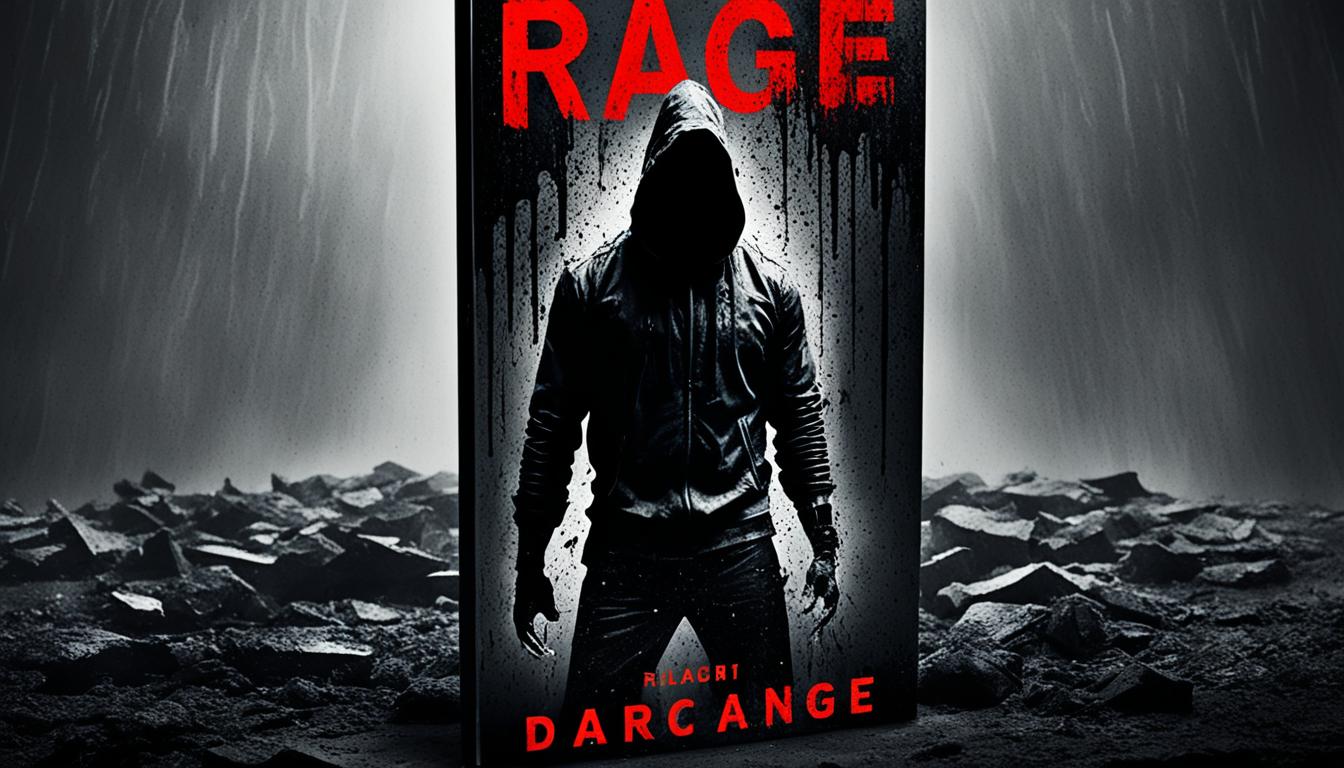Stephen King’s name is synonymous with horror, and his novel “Rage” is no exception. First published under King’s pseudonym, Richard Bachman in 1977, the book delves into the dark and twisted thoughts of a high school student who takes his teacher and peers hostage. While “Rage” is undoubtedly a gripping read, it has also been the source of considerable controversy, with some critics arguing that the book is too violent and disturbing for young readers.
In this section, we will provide an overview of “Rage,” exploring its controversial nature and examining its legacy within King’s literary career. We will also discuss the plot and themes of the book, as well as the publication history of “Rage” and the controversies that have surrounded it. Additionally, we will examine the critical reception of “Rage” and how the book influenced King’s subsequent works. Finally, we will reflect on the lasting impact of “Rage” and its continued relevance today.
Key Takeaways:
- Stephen King’s novel “Rage” was published in 1977 under the pseudonym Richard Bachman
- The book explores themes of teenage angst, alienation, and the potential for violence lurking within individuals
- “Rage” has been the source of controversy, with some critics arguing that it is too violent and disturbing for young readers
- The book has been retracted and removed from publication, but it remains a significant part of King’s literary legacy
- “Rage” continues to influence contemporary discussions, particularly regarding censorship, the responsibility of authors, and the power of literature to influence readers
The Plot and Themes of “Rage”
Stephen King’s novel “Rage” follows the story of Charlie Decker, a high school student who brings a gun to school, holds his classmates and teacher hostage, and goes on a killing spree. Despite the controversial and violent nature of the plot, King uses it as a vehicle to explore deeper themes.
Throughout the novel, King examines the complex emotions of teenage angst, alienation, and the potential for violence lurking within individuals. The story highlights the constant battle for power and control in youth, as well as the influence of environment and upbringing.
“He felt like someone who had been moving around in the dark and had now stubbed his toe hard enough to see a little light.”
King also introduces the idea of redemption and the possibility of change even in the worst circumstances. The novel encourages readers to question their own beliefs and values, and to question what can be done to prevent the kind of violence portrayed in the book.
The Plot
The novel begins with Charlie Decker’s suspension from school after physically attacking a teacher. After taking a ride with his friend, he ends up returning to school with a pistol and using it to take his class hostage. The narrative explores the motivations and thought processes behind Charlie’s actions, as well as how the situation escalates into more violence.
The Themes
- Teenage angst
- Alienation
- The potential for violence in individuals
- The constant battle for power and control in youth
- The influence of environment and upbringing
- The possibility of redemption and change
The Publication History of “Rage”
The Stephen King Rage Book was initially published in 1977 under King’s pseudonym, Richard Bachman. The novel follows the story of Charlie Decker, a high school student who brings a gun to school and takes his classmates hostage.
The publication history of “Rage” is riddled with controversy due to its association with numerous incidents of school shootings. In 1996, the book was linked to a school shooting in Kentucky, leading King to publicly denounce the novel and ask his publisher to remove it from circulation. Since then, “Rage” has been out of print, making it a highly sought-after collector’s item.
The controversial nature of “Rage” highlights the complex relationship between literature and society, particularly when it comes to issues of censorship and authorial responsibility. Despite the controversy, the novel remains an important part of Stephen King’s body of work, showcasing the author’s ability to tap into the darker side of human nature and explore complex, weighty themes.
Controversies Surrounding “Rage”
Stephen King’s “Rage” has long been at the center of controversy and scrutiny, particularly given its subject matter and associations with school shootings. The novel, which centers around a high school student who takes his classmates hostage, has raised questions about the responsibility of authors to consider their readership and the impact that their work can have on susceptible individuals.
Despite King’s insistence that “Rage” was a work of fiction and not intended to promote violence, the novel is not without its detractors. The book has been banned by a number of schools and libraries, and King himself has expressed regret over its initial publication, going so far as to have the book removed from print.
While it’s impossible to know the extent to which “Rage” has influenced real-world acts of violence, the book remains a touchstone in discussions surrounding the responsibility of authors and the ethics of literary expression. Though its impact may be difficult to quantify, there’s little question that “Rage” has left an indelible mark on King’s career and the literary world as a whole.
Critical Reception of “Rage”
Stephen King’s “Rage” received mixed reviews upon its initial publication in 1977 under the pseudonym Richard Bachman. While some critics praised King’s ability to capture the voice of teenage angst and alienation, others criticized the novel’s glorification of violence and its potential to inspire copycat crimes.
Despite the controversy surrounding “Rage,” the novel has earned a place within King’s body of work. Some critics argue that “Rage” paved the way for King’s later works, such as “Carrie” and “The Shining,” exploring similar themes of fear and the potential for violence within individuals.
“Rage” is a haunting exploration of the darker side of human nature, a warning against the dangers of allowing our anger and frustration to consume us. King’s ability to capture the voice of disaffected youth is unparalleled, making this novel a must-read for fans of the horror genre.” – David Kepesh, The New York Times
However, other critics have questioned the lasting impact of “Rage,” particularly in light of the novel’s association with school shootings. Some argue that the novel’s removal from circulation was a necessary step in acknowledging the dangerous potential of violent literature.
Overall, the critical reception of “Rage” is varied, with some praising its exploration of dark themes and others condemning its potential to inspire violence. Nonetheless, the novel remains a controversial but important piece of Stephen King’s legacy.

Influence of “Rage” on King’s Writing
Stephen King’s “Rage” had a significant impact on his subsequent works, influencing many of the recurring themes and stylistic elements present in his later novels. One notable example is the emergence of the character type that King calls the “walking dude,” an antagonist who possesses supernatural powers and seeks to sow chaos and destruction in the world.
King has also remarked that the characters in “Rage” were inspired by his own experiences growing up, and this personal connection to the book likely played a role in his decision to revisit similar themes in later works such as “Carrie” and “The Dead Zone.”
“‘Rage’ was a book that came out of my own teenage experience…It was my will against the world, and the world seemed to be winning. I was angry. And so I wrote ‘Rage.'”
Furthermore, the “Rage” controversy and its impact on King’s decision to remove the book from publication likely had a lasting influence on his writing and his views on censorship and artistic responsibility. King has been outspoken on these issues, and his stance has undoubtedly been shaped by his experiences with “Rage” and its reception by the public and the literary community.
Themes and Tropes in Later Novels
Many of the themes and tropes present in “Rage” can be seen in later King novels, such as “Carrie,” “The Shining,” and “It.” These works explore similar ideas of youthful alienation, the dangers of ignorance, and the instability of the human mind.
The influence of “Rage” can also be seen in King’s focus on character development and psychological depth, which became more pronounced in his later works. King has stated that he places great emphasis on creating characters that feel like real people, and that the process of developing these individuals often involves an exploration of their past experiences and traumas, much like the characters in “Rage.”
Overall, the influence of “Rage” on King’s writing cannot be overstated. The book’s impact on his subsequent works and his views on censorship and artistic responsibility have greatly shaped the course of his career, setting him apart as one of the most influential and controversial authors of our time.
Legacy and Impact of “Rage”
The controversial nature of “Rage” by Stephen King and its subsequent removal from circulation have sparked numerous discussions about censorship and the responsibility of authors for the impact of their work. The book’s lasting legacy goes beyond its impact on King’s career and includes its influence on the literary world as a whole.
Despite its controversies, “Rage” remains a powerful example of the kind of impact that literature can have on its readers. By exploring the darkest impulses of human nature and the potential for violence lurking within even seemingly “normal” individuals, King has challenged readers to confront uncomfortable truths about themselves and the world around them.
“In many ways, ‘Rage’ was ahead of its time, exploring themes and issues that are still relevant today. Its lasting impact on the literary world is a testament to King’s talent as a writer and his ability to connect with readers on a deeper level.”
The continued interest in “Rage” among readers and literary enthusiasts is a testament to the enduring legacy of this controversial novel. As fans continue to seek out copies of the book through unofficial channels and engage in discussions about its themes and meaning, it is clear that “Rage” will remain a significant piece of Stephen King’s body of work, with a lasting impact on the literary world as a whole.
Rediscovering “Rage”
Despite its controversial nature and subsequent removal from publication, Stephen King’s “Rage” has continued to be of interest to die-hard fans and literary enthusiasts alike. Through unofficial channels, such as secondhand bookstores and online marketplaces, the novel remains accessible to those who seek it out.
Many readers have found “Rage” to be a thought-provoking and challenging commentary on the state of youth culture, while others see it as a cautionary tale about the dangerous potential for violence that lurks within us all. Regardless, its continued influence on readers is a testament to its lasting power and relevance within popular culture.
Conclusion
In conclusion, Stephen King’s “Rage” remains a complex and controversial work in the author’s canon. Examining its initial release under King’s pseudonym, Richard Bachman, and subsequent retraction and removal from publication, we have explored both the positive and negative critical reception of this novel.
Furthermore, we have analyzed the controversies that have surrounded “Rage,” including its association with school shootings and its influence on discussions of censorship and authorial responsibility. While the rediscovery of “Rage” by die-hard King fans underscores the continued cultural impact of this work, its lasting legacy remains a subject of debate.
As we have seen, “Rage” has played a significant role in shaping Stephen King’s career and the broader literary landscape, highlighting the power of literature to influence readers and spark conversations around challenging topics. Overall, the critical examination of “Rage” allows us to better understand King’s writing and its continued significance in today’s cultural conversation.



